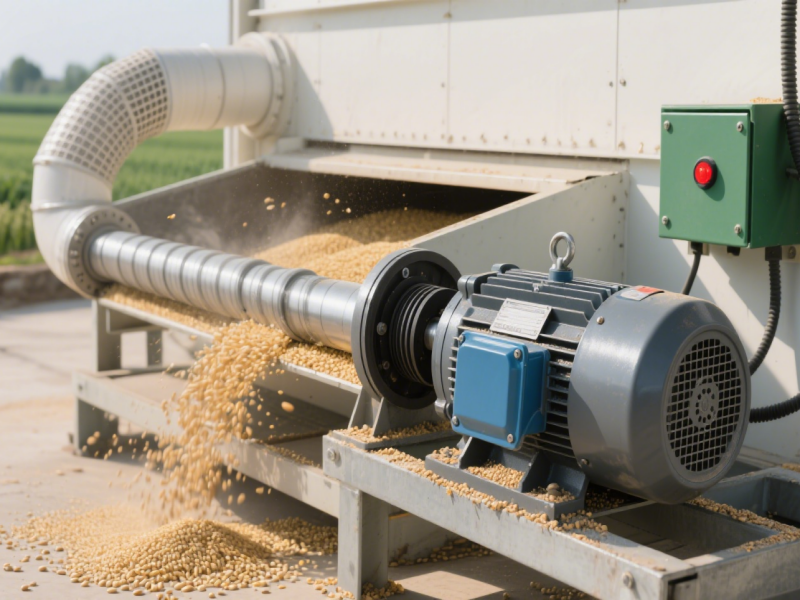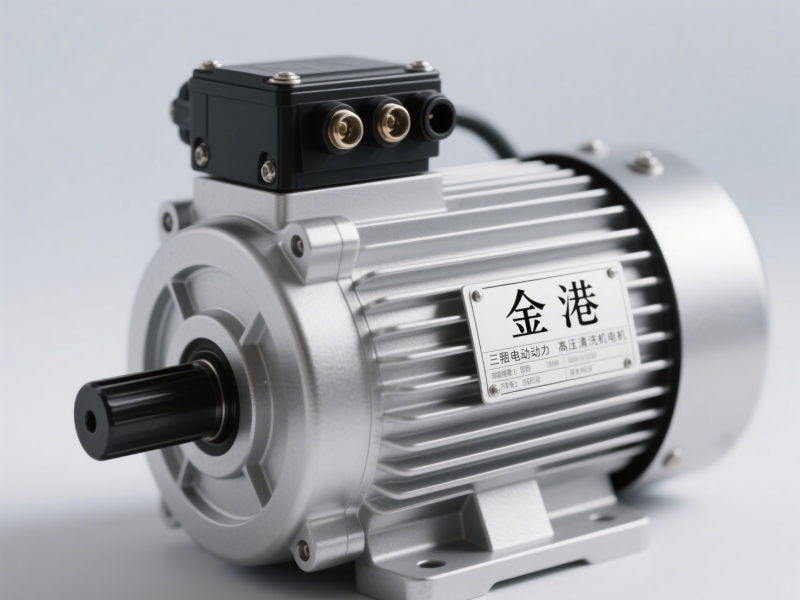Application advantages of three-phase asynchronous grain dryer agricultural motor
As the core power component of agricultural grain dryers, the three-phase asynchronous motor‘s application advantages are highly adapted to the particularities of agricultural production scenarios (such as long-term operation, dusty environments, voltage fluctuations, high load requirements, etc.), and can effectively solve the problems of power stability, efficiency and practicality in the drying process.
Power Characteristics Adaptability: Meeting the Dryer’s High-Load, Continuous Operation Requirements
The core functions of a grain dryer (such as hot air blowing, conveyor belt drive, and auger turning) require stable and continuous torque output. The mechanical characteristics of a three-phase asynchronous motor perfectly match this requirement:
High Starting Torque: When starting a dryer, it must drive a fully loaded auger and conveyor belt. A three-phase asynchronous motor’s starting torque can reach 1.5-2.5 times the rated torque, easily overcoming starting resistance without additional auxiliary equipment and preventing stalling or start failure. (In contrast, single-phase motors have low starting torque and are prone to starting failures due to excessive loads.)
Wide Load Range: During the drying process, grain moisture levels fluctuate from high to low, and the load will fluctuate slightly with grain fluidity and weight. A three-phase asynchronous motor ensures stable speed. For example, a constant blower motor speed ensures uniform hot air flow, preventing uneven drying of the grain due to air flow fluctuations.
Durability for continuous operation: Agricultural dry seasons often require 24-hour uninterrupted operation. Three-phase asynchronous motors use fully enclosed or protected structures, with high winding heat dissipation efficiency (low core and copper losses). They can operate for long periods without overheating, and their mean time between failures (MTBF) is much higher than that of ordinary civilian motors, reducing the risk of grain mildew caused by motor failures during the dry season.
Energy Efficiency and Cost Advantages: Reducing Agricultural Production Energy Consumption and Long-Term Investment
Agricultural production is highly cost-sensitive, and three-phase asynchronous motors excel in energy efficiency and cost-effectiveness:
High Operating Efficiency: The power factor (cosφ) of three-phase asynchronous motors is typically between 0.8-0.9 (far exceeding the 0.5-0.7 of single-phase motors), and efficiency can reach 85%-95% at rated load.
Low Maintenance Cost: Their simple structure requires routine maintenance, requiring only regular bearing lubrication and casing dust cleaning, eliminating the need for frequent component replacement. Furthermore, agricultural three-phase asynchronous motors often utilize maintenance-free bearings, further reducing maintenance frequency and labor costs (compared to DC motors, which require periodic brush replacement and are complex and costly).
Suitable Procurement Cost: The 10-30kW three-phase asynchronous motors commonly used in agricultural dryers offer mature technology, high production output, and low subsequent maintenance and replacement costs, meeting the demand for cost-effective agricultural equipment.

Strong Environmental Adaptability: Withstands Agricultural Dust, Humidity, and Voltage Fluctuations
Agricultural environmental conditions (such as grain dust around the dryer, humid field air, and unstable rural power grid voltage) place extremely high demands on motor protection. Three-phase asynchronous motors are designed to meet these requirements:
High Protection Rating: To combat agricultural dust, motors are typically IP54/IP55 rated. The tightly sealed housing prevents grain dust from entering the windings and causing short circuits. They are also resistant to rain splash and humid field air, preventing rust from moisture.
High Voltage Fluctuation Tolerance: Rural power grids are prone to voltage fluctuations (within ±10%) due to peak power consumption. Three-phase asynchronous motors are designed with a wide voltage range. Even with slight voltage drops, they can maintain their standard torque output, eliminating frequent shutdowns due to voltage fluctuations and ensuring continuous drying operations.
Vibration and impact resistance: Agricultural dryers are mostly mobile or simple fixed structures. During operation, they may vibrate due to uneven ground or mechanical transmission. The stator and rotor of the three-phase asynchronous motor adopt a reinforced design, and the bearing seat has high rigidity, which can withstand certain vibrations and impacts, and is not easy to cause loosening or damage of components due to vibration.
Wide Compatibility: Compatible with Dryers of Different Specifications, Meeting Diverse Needs
In agricultural production, grain dryers vary greatly in size. The three-phase asynchronous motor’s “multiple power ratings and multiple mounting configurations” offer flexible adaptation:
Comprehensive Power Coverage: From 3kW and 5kW motors for driving small dryers to 30kW and 55kW motors for driving the hot air furnace blower and large augers in large dryers, the three-phase asynchronous motor’s diverse power ratings allow precise matching to the dryer’s throughput, avoiding energy waste and motor overload burnout.
Flexible Mounting: Supports both horizontal mounting (compatible with horizontal conveyor belts and augers) and vertical mounting (compatible with vertical hot air blower motors). Customizable shaft extension lengths and flange sizes allow for direct integration with the dryer’s drive mechanism (such as couplings and pulleys), eliminating the need for complex adapter components and simplifying equipment assembly.
Compatible with agricultural power supply systems: Three-phase asynchronous motors can be directly connected to the existing power grid without the need for additional transformers or frequency conversion equipment (compared to single-phase motors that require separate wiring, and high-power single-phase motors are difficult to adapt to rural power grids), making installation very convenient.
In summary, three-phase asynchronous motors, with their core advantages of “stable power, high energy efficiency, environmental resistance, wide adaptability, and safety and reliability,” have become the “optimal power choice” for agricultural grain dryers. They can effectively improve drying efficiency, reduce production costs, adapt to the actual needs of agricultural production, and are a key component in ensuring grain drying quality.




